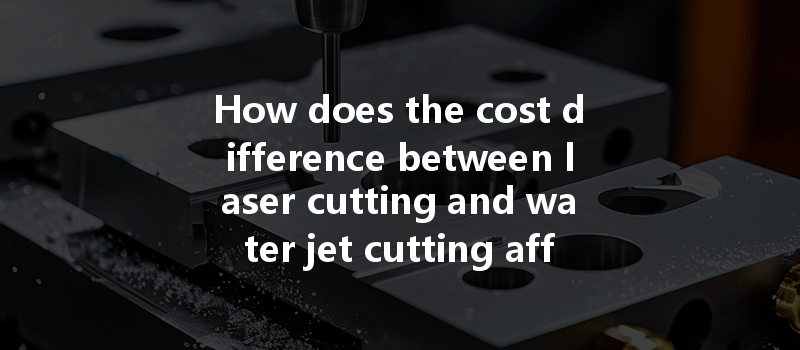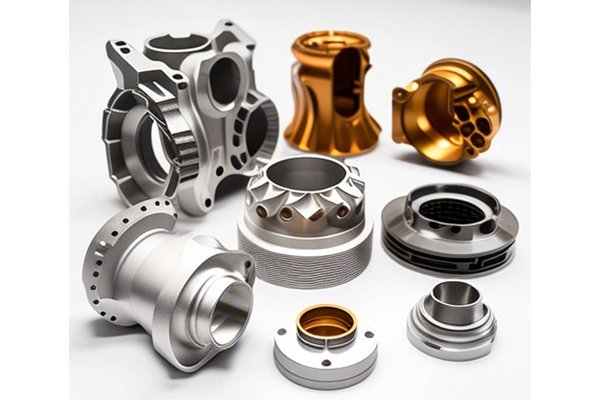Did you know that the global laser cutting machine market is projected to reach over $5 billion by 2026? As industries increasingly rely on precision processing, understanding the nuances of various cutting methods, particularly laser cutting and water jet cutting, becomes essential for decision-makers in manufacturing. With competition intensifying and the need for cost-effective solutions growing, it’s crucial to evaluate the economic implications of these two formidable cutting techniques.
In this blog, we will closely analyze the differences in costs associated with laser cutting versus water jet cutting, helping you make informed decisions about which method suits your CNC machining needs. We’ll explore their operational costs, long-term sustainability, advantages, and disadvantages, and ultimately guide you to the best choice for your specific project requirements.
—
Chapter 1: The Basics of CNC Machining
Before diving into the specifics of cutting methods, it’s essential to understand what CNC (Computer Numerical Control) machining is. CNC machining utilizes computer-controlled tools to remove material from a workpiece to create a desired part or product. This sophisticated process provides high precision, repeatability, and the ability to work with a wide range of materials.
CNC machining encompasses various methods, including milling, turning, drilling, and cutting. Among these, cutting processes like laser cutting and water jet cutting have gained popularity due to their effectiveness in producing intricate designs with minimal material wastage.
Chapter 2: Overview of Laser Cutting
2.1 How Laser Cutting Works
Laser cutting employs a focused beam of light to heat and vaporize material. The process involves the following steps:
2.2 Cost Factors in Laser Cutting
Chapter 3: Overview of Water Jet Cutting
3.1 How Water Jet Cutting Works
Water jet cutting uses a high-pressure stream of water, often mixed with an abrasive substance, to cut through various materials. Here’s how it works:
3.2 Cost Factors in Water Jet Cutting
Chapter 4: Cost Comparison Analysis
When it comes to choosing between laser cutting and water jet cutting, it’s vital to weigh the pros and cons, specifically in terms of costs:

4.1 Initial Costs vs. Long-term Costs
4.2 Material Considerations
Understanding which materials you plan on cutting is crucial. If your projects predominantly involve softer materials like plastics and wood, a laser cutter is ideal. Conversely, for more varied and complex materials, water jet cutting might protect your investment better.
4.3 Labor and Setup Times
Laser cutting typically has faster cutting speeds, which may reduce labor costs in high-volume production. However, water jet cutting requires extensive setup to calibrate for various materials, which could increase initial labor costs but save material waste.
4.4 Quality and Tolerance
When comparing precision, laser cutting excels with tight tolerances and smooth finishes, which can save on secondary processing. Water jet cutting may produce a rougher edge depending on the material and requires post-processing for certain applications.
Chapter 5: Case Studies for Practical Insight
To better illustrate the cost implications, let’s take a look at real-world examples that highlight the differences in selecting between laser and water jet cutting.
5.1 Case Study 1: Aerospace Component Production
For an aerospace company requiring highly intricate aluminum components, laser cutting was chosen for its precision and shorter cut times. Initial costs were substantive, but savings were realized through reduced post-processing requirements and quicker production cycles.
5.2 Case Study 2: Architectural Design Firm
An architectural design firm considered both methods for a large installation including glass and metal. Ultimately, they opted for water jet cutting to cut through multiple materials without needing to switch machines—saving both time and cost.
Chapter 6: Factors to Consider When Choosing a Cutting Method
6.1 Project Requirements
Evaluate the specifications and requirements of your project before choosing the cutting method. Consider factors like thickness, material type, tolerances, and finish requirements.
6.2 Production Volume
If high-volume production is needed, laser might be more advantageous due to quicker cycle times. Conversely, for prototyping or low-volume custom jobs, the flexibility of water jet might be appealing.
6.3 Cost Structure
Understand the entire cost structure of both options, taking into account not only the cutting costs but also the ancillary expenses like material waste, energy consumption, and labor.
—
: Making the Right Choice for Your CNC Machining Needs
In conclusion, the considerable differences in costs and efficiency between laser cutting and water jet cutting can significantly impact your business operations. While laser cutting excels in speed and precision, water jet cutting offers versatility and cost-effectiveness for a broader range of materials. Understanding the unique processes, initial and operational costs, material compatibility, and project specifications will equip you with the knowledge needed to make an informed decision.
As manufacturing continues to evolve, stay ahead by considering factors that will enhance your production efficiency while controlling costs. Ultimately, the right choice between laser cutting and water jet cutting will not only affect your bottom line but also influence the quality of your products and the satisfaction of your customers.
Reflecting on the critical information provided in this blog can help you navigate your CNC machining decisions more confidently. By thoroughly evaluating the critical elements discussed, you’ll be far better equipped to choose the cutting technique that best aligns with your projects, ensuring quality in production and sustainability in operations.
—






